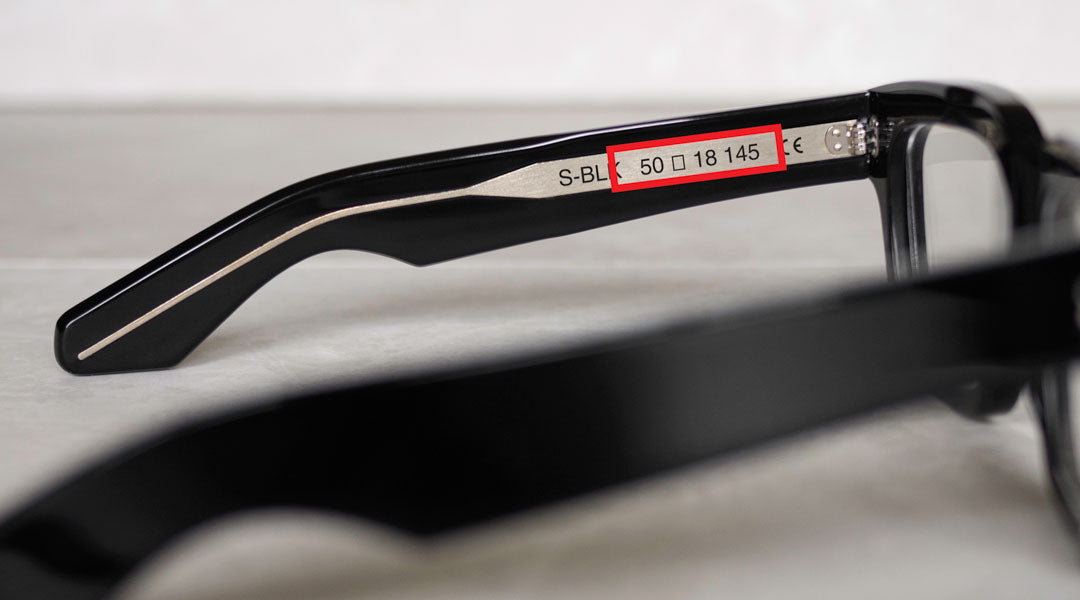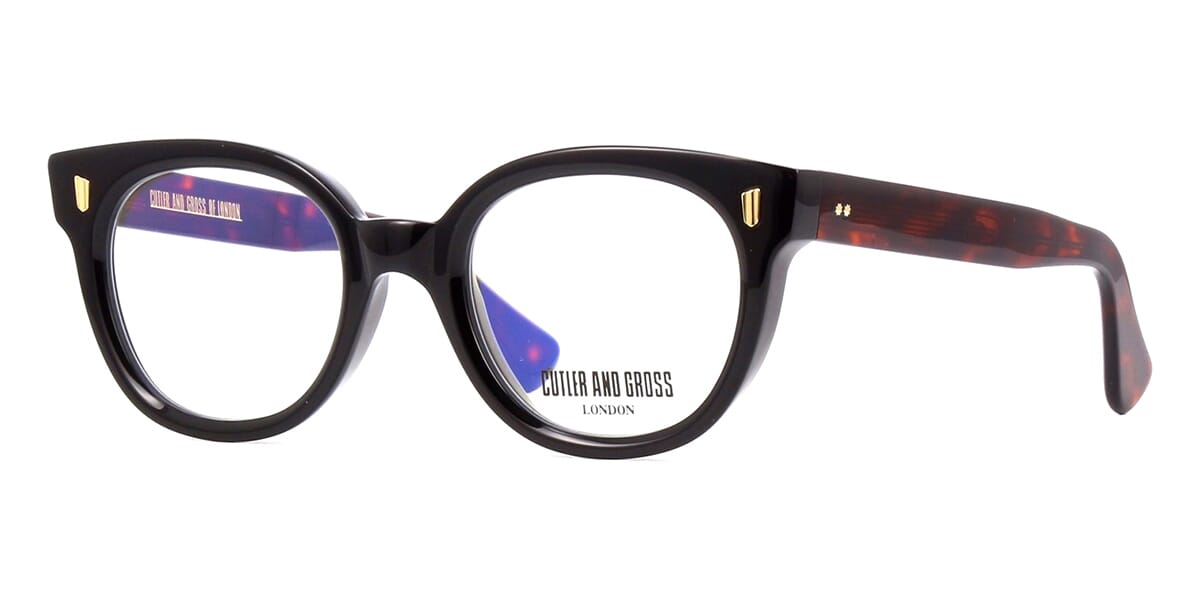Greetings big beak.
Searching for flattering glasses?
As you know, the look of your frame is just as important as the fit. To find the right balance, your choice of glasses should give you comfort and confidence. Choose correctly, they’ll compliment your features without making you look like a Disney villain pirate.
This blog post will help you find the best glasses for a big nose, including an 8 step guide to ensure a proper frame-fit and flattering new look.
Nose first, let's dive in.


What type of glasses suits a big nose?
The best glasses to suit a big nose are thick, full-rimmed frames which create a strong visual contrast on your face. Chunky acetate spectacles (made from acetate) draw attention to your eyes, making your nose appear less prominent.
For women, this could be large oval glasses or cat eyes. For men, this could be the classic Wayfarer shape or traditional square rimmed glasses. Of course, this depends on your personal style preference, hair colour, skin tone and the shape of your face.
Are big glasses better for big noses?
Big or oversized glasses tend to look better if you have a big nose. By contrast, large spectacle frames with thick rims demand visual attention towards your most expressive features; namely your eyes and brows. As your new dominant facial feature, chunky eyeglasses will eclipse your large nose for a pleasing and often more intelligent looking appearance.
Conversely, thin, wire or even rimless frames tend to be worse for large noses due to their lack of visual contrast on your face. These sleek and skeletal frames are designed to be lightweight and therefore let your nose remain your largest and most prominent feature.
To help you find the best glasses for a big nose, check out the list below for advice on frame fit, sizing and style.
Best glasses for big nose: 8 step guide

#1 Frame size
Let’s get this nailed down.
Just like shoes or clothes, spectacles and sunglasses also use standard sizing.
But how do you know their size?
On most glasses, their dimensions will be labelled on the inner surface of the frame, usually on the temples (arms). For example: 50 [] 18 145 (all in mm.)
50 = lens width
18 = bridge width
145 = temple length
In this particular order, these sizes can help both the comfort and your look of your glasses, which you can explore in the following sections.


#2 Lens width
The first measurement of your glasses frame denotes the width of your lenses in mm. As a rule of thumb, the larger the lens width, the larger the frame will generally be (in all three aspects). For example;
58 [] 18 145
Wide, thick glasses frames will help make all your facial features look smaller, including your nose.
But if you go too wide with your glasses, you run the risk of an oversized frame continually sliding down your nose or have temples which are just way too long for you. This results in frame-fiddling or constantly pushing them back up.
This gets annoying and makes your frame dirty from all the handling.
Ideally, aim for a frame which will stay properly seated but has lens widths which are enough to contrast with your nose to make it seem smaller.
Obviously, avoid frames which are too narrow. They’ll make your head seem wider and your nose even bigger.

"Your nose is the starting-point for the way your frames fit you. How they perch informs the alignment of your lenses with your eyes which is especially important if you use varifocal or bifocal lenses."
Lucy, co-founder, Banton Frameworks

#3 Bridge width
The second measurement of your glasses frame denotes the width of your bridge in mm. This second digit (usually separated by a square or space) is possibly the most crucial dimension in the context of your nose. For example.
50 [] 18 145
If you’re particularly wide or narrow in the bones (maxilla) on either side of your nose, it’s worth keeping in mind the bridge size that fits you the best.
A wide bridge requirement means the distance between your frame's lenses needs to be further apart to accommodate your prominent nasal bones. Interestingly, it isn't actually your nose that causes this, but it does mean that regular-bridge glasses might ride-up and rest high on your nose.
A narrow bridge requirement means your nasal bones aren't particularly prominent, therefore you may often experience glasses frames sliding down your nose. Choosing a narrow-bridge frame or the addition of adhesive nose pads will help prevent this.
The average bridge width for adults is usually around 18mm, but this can range from 14mm all the way to 24mm depending on your age, gender and ethnicity.
But here’s the twist.
You can have a narrow nose, but still need a wide bridge. And vice vera.
Because your frame rests on both the upper maxilla and nasal bones on either side of your nose, your unique facial structure determines your best bridge size.
Keep an eye on this when you’re eying-up new glasses.

#4 Bridge shape
Depending on your style, the shape of a bridge can give a ‘slimming’ effect to your nose. In terms of glasses styling, there are two main types to choose from;
Saddle bridges (below) are a more contemporary style which tend to ‘hug’ around your nose with little to no gap at the top. This close contact gives the impression of a tighter fit and therefore can make your nose look wider and larger.
Keyhole bridges (below) are an old-fashioned style, which funnily enough, resemble a keyhole. This design creates a little gap around the uppermost section which gives the impression of space, thus making your nose seem smaller.
Depending how a frame rests on your nose can influence its perception.

#5 Frame shape
Glasses that make your nose look smaller tend to be large, thick and rounded in their lens shapes
This isn’t concrete per se, but round shaped glasses can have an aesthetically flattering effect if you have a large nose. Due to their shape, they help harmonise with your nose, rather than visually contrasting with it.
This is why angular frames with straight edges can draw attention to, rather than flatter your nose.

#6 Nose pad type
The nose pads on glasses frames can vary in shape, material and style. In turn, this can affect how your frame rests and looks on your nose when being worn. Before buying new glasses, check out the most common types below;
Acetate glasses (seen above left) typically use nose pads which are permanently sculpted into the interior surface of the. These little acetate 'slugs' offer no adjustability therefore it's crucial to select the correct bridge-width when choosing full-rim acetate frames like these. Acetate pads like these can only be modified with addition of adhesive nose pads or by having them permanently removed via filing and replaced with metal pad arms discussed below.
Wire glasses invariably use 'pad arms' which are soldered/brazed onto the interior wire rims of the frame. These malleable branches can be carefully bent in infinite variations to accommodate your unique nose shape. Furthermore, the pads themselves can be replaced or enlarged with a variety of materials such as titanium or more adherent silicone versions (seen further below).
If you struggle to find glasses that fit your nose correctly, frames with metal pads arms can be a great option for maximum adjustability. For this reason, low bridge or 'Asian fit' glasses usually feature metal pads arms to accommodate high cheekbones and flat nasal bridges.



"For the Asian optical market, frames are often made with extra large nose pads positioned higher up the frame front. This is to compensate for the wearer's genetically high cheekbones and flat nose bridge."
Jamie, co-founder, Banton Frameworks

#7 Frame colour
A strongly contrasting frame colour is a great trick to draw attention away from your nose and emphasise your eyes.
Especially if you have a pale complexion, a starkly coloured frame such as black or dark Havana will take centre stage and bring your eyes (and confidence) to the fore.
Another method to help reduce the appearance of your nose is to opt for a frame which has differently coloured temples to the frame front.
For example, a black frame front with tortoiseshell sides will create contrast and will visually ‘pull’ attention towards your eyes and to the sides of your glasses frame. Check out the Cutler & Gross 9298 01 frame with its subtle but stylish dual-acetate combination.


#8 Frame thickness
Dominant glasses can be your greatest asset.
Bold chunky frames are inherently confident and can help to ‘quiet’ the prominence of your large nose. Their thick rims will picture frame your eyes as the main attraction.
Plus, solid acetate frames are simply more robust. With thicker material, solid rivets and reinforced temple arms, chunky acetate spectacles are much more likely to outlive flimsy thin equivalents.
Bold full-rim glasses project your personality in a way that rimless frames simply can’t. Slender or rimless frames like these tend to blend in, rather than stand out.
So if you want your frames to do the talking, get behind glasses which are thick and bold.
They’ll be your secret power.
Big nose glasses FAQ's

What type of glasses make your nose look smaller?
Generally, its full rimmed (thick) glasses frames that help to make your nose look smaller. By means of contrast, they draw the focus to your eyes and away from the nose. Bold chunky frames or dominant glasses are also recommended as they project confidence and can help to balance out the prominence of a large nose.
What type of glasses should I avoid if I have a large nose?
Glasses with thin or rimless frames should be avoided as they tend to blend-in, struggling to draw visual attention away from your nose. Additionally, undersized or small glasses frames can also make a large nose appear even larger. It is best to opt for thicker frames and avoid any designs that are too small in proportion to your face.
What type of glasses are most comfortable on the nose?
The most comfortable glasses are those that rest properly on your nasal (maxilla) bones where the nose pads distribute the frame's weight evenly. The most versatile glasses feature adjustable metal 'pad arms' with silicone or rubber pads which can be adjusted either by yourself or your optician.
Like your clothes or shoes, post-purchase modifications to your glasses are possible. But it's always best to start with a frame that fits you properly before seeking aftermarket modifications. Not only does this increase your chances of long-term comfort, but correctly fitting glasses will aid their optical performance too.
Are aviators good for big noses?
Thanks to their enormous lens coverage, Aviator spectacles can be a great optical style if you have a big nose. The dominance of their large lenses makes a strong contrast on your face, therefore making your nose and head seem smaller. For maximum contrast, acetate Aviators are your best option. For something more traditional (and light weight) wire Aviators are a little more slimline.
How are glasses supposed to fit on nose?
Nose pads should be the main contact points where your glasses rests on the maxilla (nasal) bones of your face. Ideally, this is achieved via proper bridge-width, however, some nose pads are adjustable and some are fixed depending on the style of your frame.
If you have a large nose, pads too narrow can pinch your nose and make the frame sit high on your brow. In this instance, select glasses with a wider bridge or have its pads adjusted, exchanged or removed by a skilled working optician or frame maker.
For especially narrow/long noses, enlarged add-on pads can be added to prevent the frame from resting on your cheeks.
Ideally, you’d avoid this by choosing the correct bridge width.
Hopefully you found this article helpful. Please check out our other guides to choosing glasses. Thanks for stopping by.
